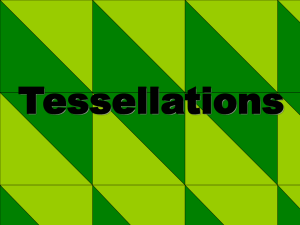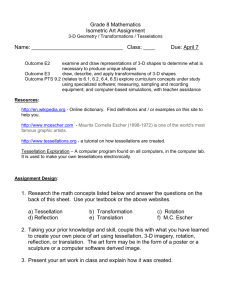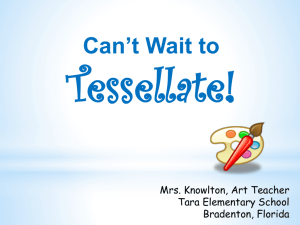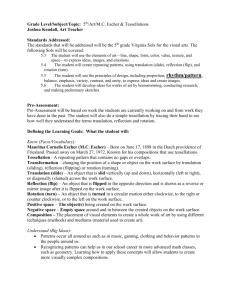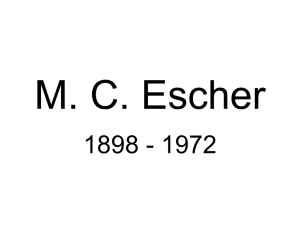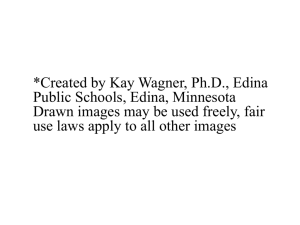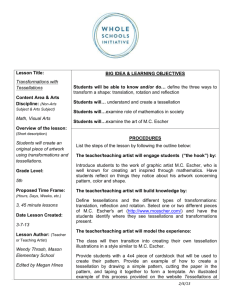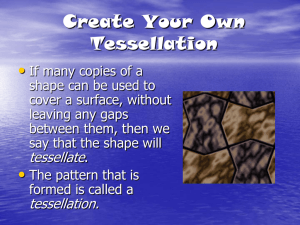tessellation lesson plan
advertisement
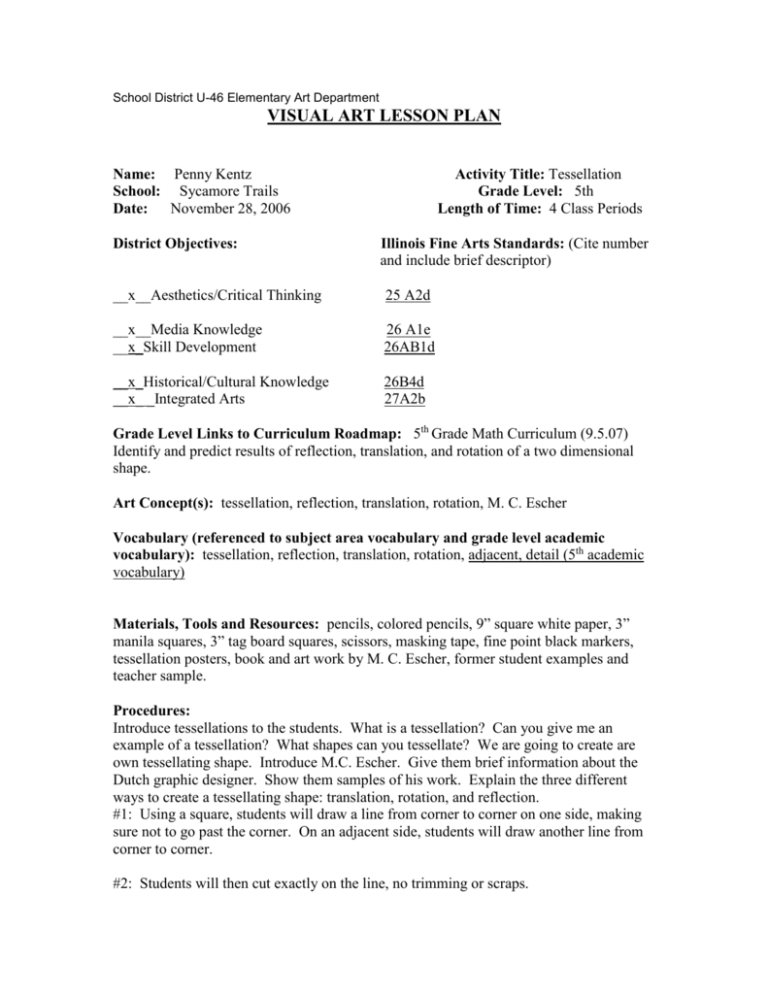
School District U-46 Elementary Art Department VISUAL ART LESSON PLAN Name: Penny Kentz School: Sycamore Trails Date: November 28, 2006 District Objectives: Activity Title: Tessellation Grade Level: 5th Length of Time: 4 Class Periods Illinois Fine Arts Standards: (Cite number and include brief descriptor) __x__Aesthetics/Critical Thinking 25 A2d __x__Media Knowledge __x_Skill Development 26 A1e 26AB1d __x_Historical/Cultural Knowledge __x_ _Integrated Arts 26B4d 27A2b Grade Level Links to Curriculum Roadmap: 5th Grade Math Curriculum (9.5.07) Identify and predict results of reflection, translation, and rotation of a two dimensional shape. Art Concept(s): tessellation, reflection, translation, rotation, M. C. Escher Vocabulary (referenced to subject area vocabulary and grade level academic vocabulary): tessellation, reflection, translation, rotation, adjacent, detail (5th academic vocabulary) Materials, Tools and Resources: pencils, colored pencils, 9” square white paper, 3” manila squares, 3” tag board squares, scissors, masking tape, fine point black markers, tessellation posters, book and art work by M. C. Escher, former student examples and teacher sample. Procedures: Introduce tessellations to the students. What is a tessellation? Can you give me an example of a tessellation? What shapes can you tessellate? We are going to create are own tessellating shape. Introduce M.C. Escher. Give them brief information about the Dutch graphic designer. Show them samples of his work. Explain the three different ways to create a tessellating shape: translation, rotation, and reflection. #1: Using a square, students will draw a line from corner to corner on one side, making sure not to go past the corner. On an adjacent side, students will draw another line from corner to corner. #2: Students will then cut exactly on the line, no trimming or scraps. #3: To create a translation, students will slide the shapes across the square to the opposite side and tape them end to end aligning them exactly. To create a rotation, students repeat steps #1 and #2 but instead of sliding, rotate the shapes to the adjacent side. To create a reflection students repeat steps #1 and #2 but flip them over, then slide the cut shapes to the opposite side. Students will start by manipulating manila squares until they produce a shape that they can make into something. After adding details, they then can reproduce the shape on a tag board square. They will trace their shape starting in the middle and tessellating them across the paper. Complete details will be drawn on the four complete center tessellations. The remaining space will have outlined shapes but no details. Shapes and details will be outlined with thin black marker. The four center shapes will be colored alternating cool and warm themes. Evaluation / Assessment Tool: _x__Artwork __x__Discussion ____Quiz ____Self-Evaluation ___Rubric References: M.C. Escher.com, Tessellations.org, Tessellation posters, M.C. Escher prints Class Summary Next week: The students will continue working with their tessellations. I will review cool and warm colors before students begin coloring. After outlining with black marker, students will use alternating color schemes to color their tessellation. The following week students will finish outlining and coloring. Finished papers will be mounted on a piece of colored construction paper. Students will have an opportunity to choose this piece to hang in the Fine Arts Night in the spring. Discipline Plan: Classroom rules and consequences are posted in the room. I reward students who behave with the ability to sign the “Artist of the Week” poster. Everyone eventually gets a chance to sign. I make a new poster each semester. Students who misbehave suffer the consequences and chose their seats last when we switch at the quarter. Slates are wiped clean each quarter.
